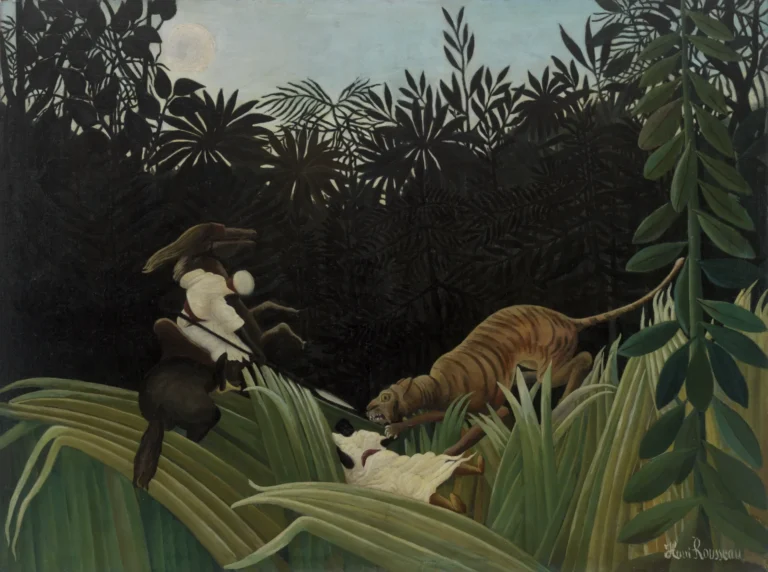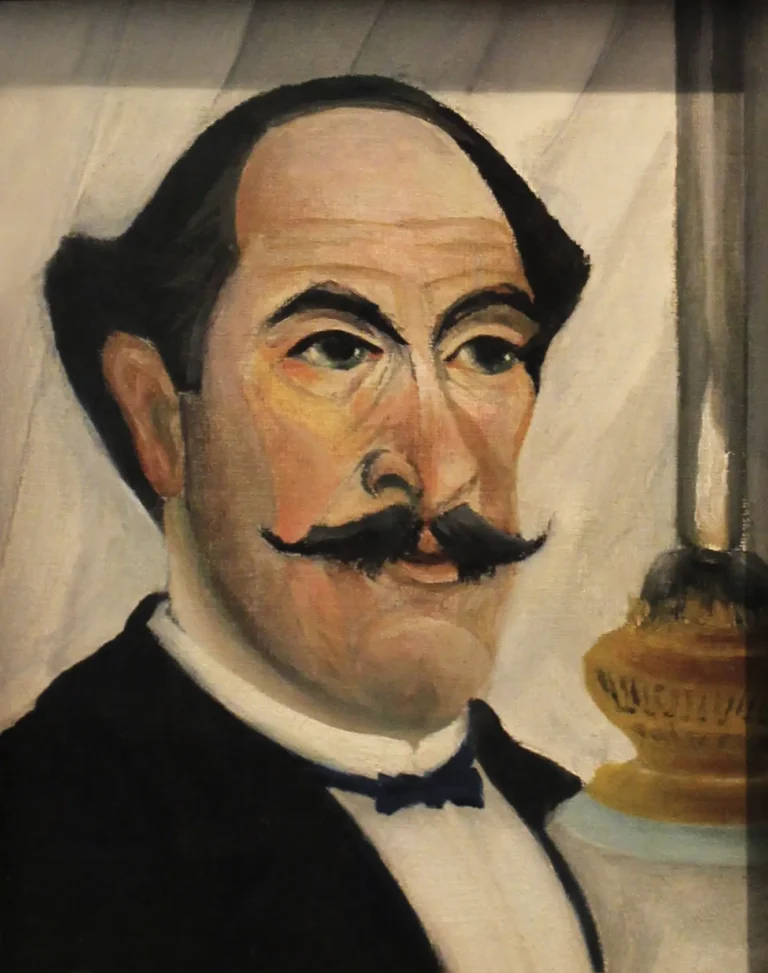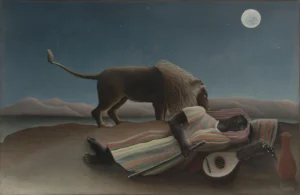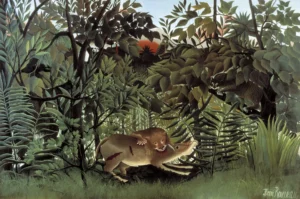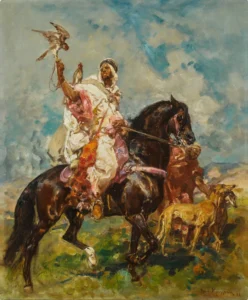Scouts Attacked by a Tiger (1904)
Henri Rousseau's Scouts Attacked by a Tiger. painted in 1904, captures a thrilling scene of scouts under attack by a tiger in a lush jungle. The oeuvre is notable for Rousseau's naive use of vibrant colors and meticulous detail, reflecting his fascination with nature. This masterpiece is exemplary of primitivism and showcases the artist's unique perspective despite his self-taught background.
Year 1904
About the Artwork
Created in 1904, Scouts Attacked by a Tiger reflects Henri Rousseau's passion for the untamed natural world; living in Paris, he sought inspiration by studying plants and taxidermied animals at museums. The artwork highlights Rousseau’s imagination, merging the adventure of scouting with the stark realities of jungle life. Although Rousseau was often criticized for his simplistic style, this piece played a crucial role in defining his legacy as a pioneer of naive art, demonstrating how he communicated complex themes of danger and the beauty of nature with childlike wonder.
Did You Know
Rousseau’s fascination with the jungle stemmed from literature and illustrations, as he never traveled outside France, creating his scenes from a vivid imagination and museum studies.
The tiger in Rousseau’s painting symbolizes untamed nature and primal instincts, reflecting a common theme of danger that lurks in adventure, representing the artist’s critique of civilization versus the wild.
Initially dismissed by critics, Rousseau’s work gradually garnered recognition and admiration, and today he is hailed as a pivotal figure in the naive art movement.





